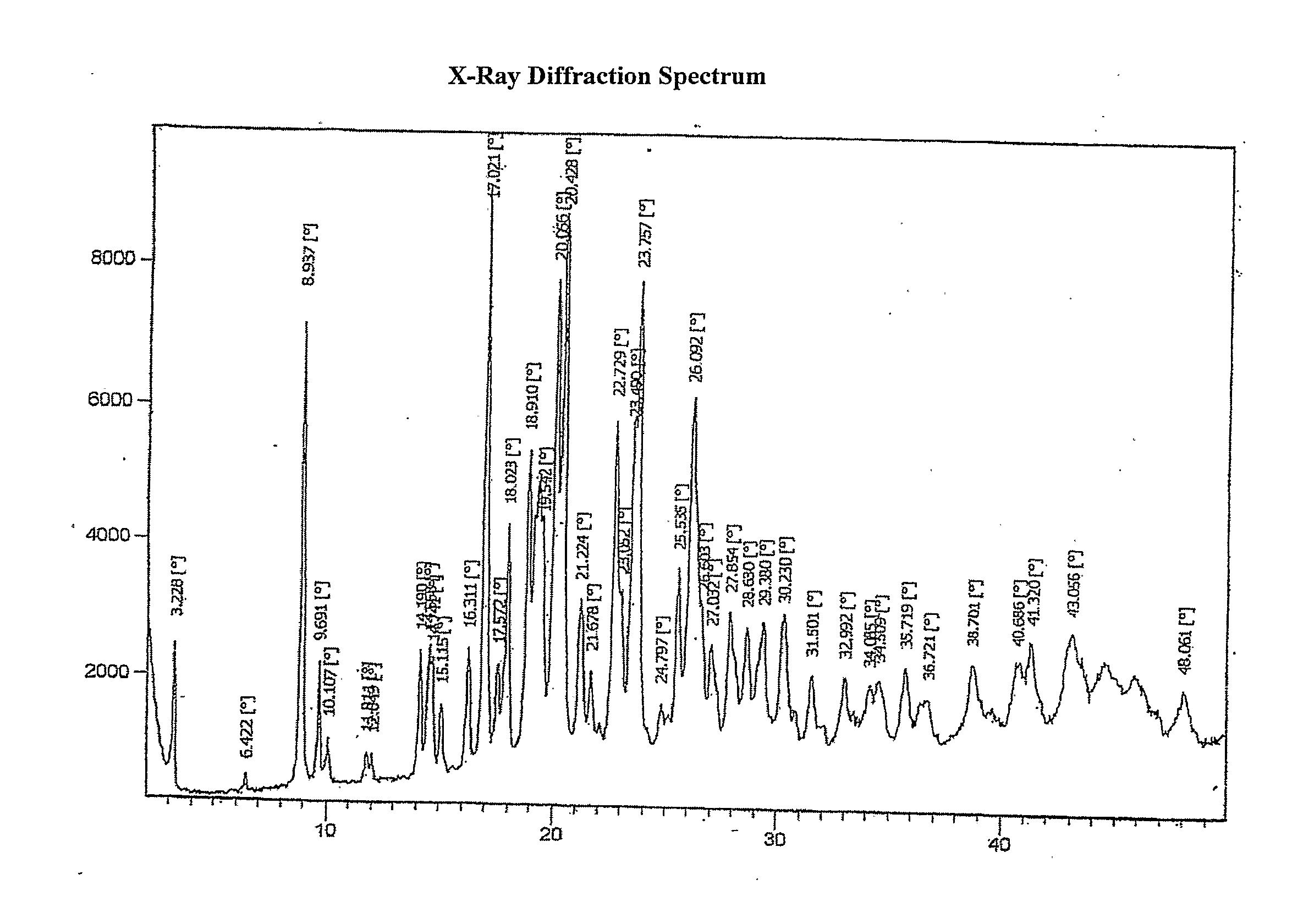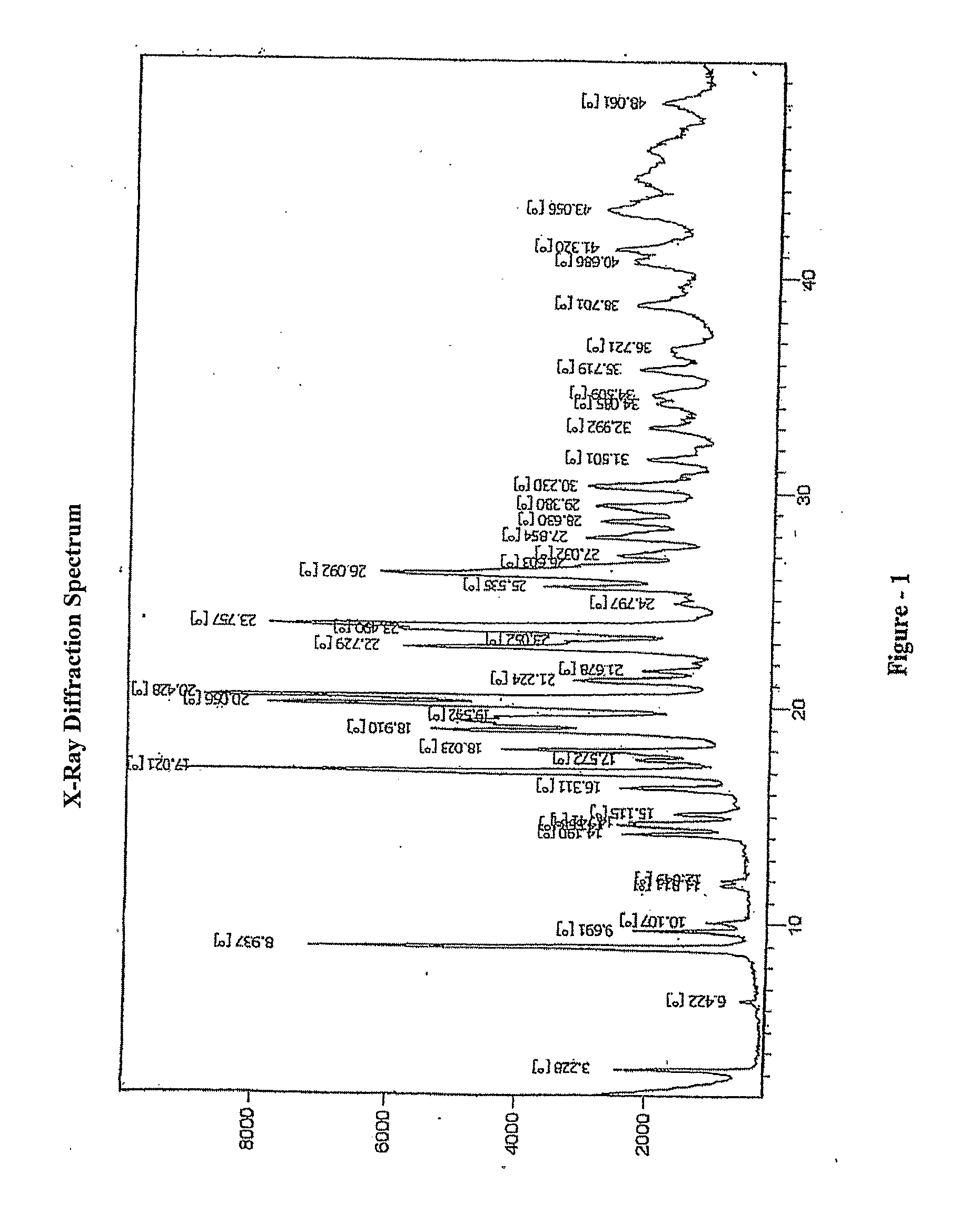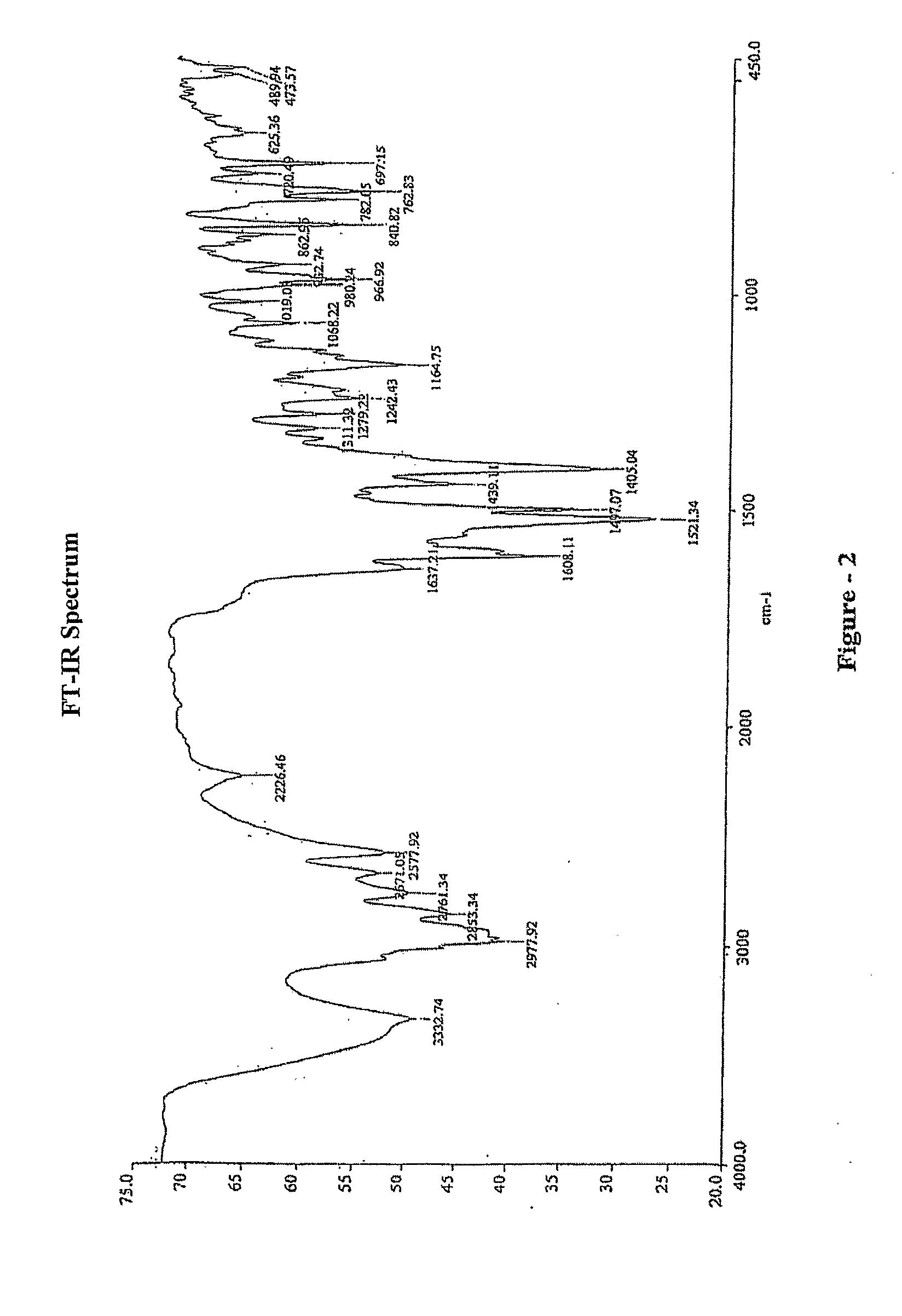Process for the preparation of montelukast and its salts thereof
a technology of montelukast and salt, which is applied in the field of montelukast, can solve the problem that the process is not suitable for large-scale production
- Summary
- Abstract
- Description
- Claims
- Application Information
AI Technical Summary
Problems solved by technology
Method used
Image
Examples
example-i
Preparation of 2-[1-[1-[1(R)-[3-[2-(7-Chloroquinolin-2-yl)ethenyl]Phenyl]-3-[2-(methoxycarbonyl)phenyl]propylsulfanylmethyl]cyclopropyl]acetic acid isopropyl amine salt
[0073]Suspend Sodium hydride (28 Gm, 0.70 moles) in DMF (400 ml), cool to −5° C. under nitrogen, slowly add the solution of 1-(mercaptomethyl)cyclopropane acetic acid (46 Gms, 0.315 mole) in DMF (100 ml) at −5° C. to 0° C. over 1 hr and maintain at −5° C. to 0° C. for 1 hr. Then slowly add Methyl 2-[(3S)-[3-[(2E)-(7-chloro quinolin-2-yl)ethenyl]phenyl]-3-chloropropyl]benzoate (100 Gms, 0.21 mole) in 4 equal lots at −5° C. to 0° C. over 1 hr and maintain the reaction mass at −5° C. to 0° C. for 24 hrs. Transfer the reaction mass into a mixture of 5% NaCl solution (1000 ml): ethyl acetate (1000 ml) and mix for 30 min. at temperature below 20° C. pH of the reaction mass is adjust to 7.0 by addition of 20% aqueous solution of Tartaric acid (100 ml) at 10° C.-25° C. and mix for 30 min. Allow to settle the layers, separate ...
example-ii
Preparation of 1-[[[(1R)-1-[3-[(1E)-2-(7-chloro-2-quinolinyl)ethenyl]phenyl]-3-[2-(1-hydroxy-1-methylethyl)phenyl]propyl]thio]methyl]cyclopropane acetic acid cyclohexyl amine salt (Montelukast CHA salt)
[0075]Step-1: Suspend 2-[1-[1(R)-[3-[2-(7-Chloroquinolin-2-yl)ethenyl]phenyl]-3-[2-(methoxy carbonyl)phenyl]propylsulfanylmethyl]cyclopropyl]acetic acid isopropyl amine salt (140 Gms, 0.21 mole) in a mixture of methylene chloride (1680 ml), water (980 ml) and mix for 15 min. Adjust the pH of the reaction mass to 4.5 with of 6% acetic acid (240 ml) at 25° C.-35° C., mix for 30 min, allow settling the layers, separating the organic layer and extracting the aqueous layer with methylene chloride (1000 ml). Combine the organic layers, wash with water (980 ml), dry over sodium sulphate and distill off methylene chloride initially atmospherically, finally under reduced pressure to get the residue. Dissolve the residue in toluene (1000 ml) and use the solution in next step.
[0076]Step-2: Raise...
example-iii
Preparation of 2-[1-[1(R)-[3-[2-(7-Chloroquinolin-2-yl)ethenyl]phenyl]-3-[2-(1-hydroxy-1-methylethyl)phenyl]propyl sulfanyl methyl]cyclopropyl]acetic acid Isopropyl amine salt (Montelukast IPA salt)
[0078]Charged DMF (500 ml) and 2-[2-[3S[3-[2-(7-Chloroquinolin-2-yl)ethenyl]phenyl]-3-chloropropyl]phenyl]-2-propanol (100 gms) at 25-35° C. under nitrogen atmosphere. Reaction mass is maintained at room temperature for 10-20 minutes to get a clear solution. Reaction mass temp is raised to 35° C. and charged Cesium Carbonate (205.3 gms) at 33-35° C. Reaction mass is maintained at 33-35° C. for 5-15 min. 1-(Mercaptomethyl)cyclopropane acetic acid (33.7 gms in 200 ml of DMF) is added to the above solution at 33-37° C. over 4-5 hrs. Maintained the reaction mass at 33-37° C. for 30 minutes and checked for the reaction completion. Cooled the reaction mass to 25-30° C. and quenched into a mixture of Ethyl acetate and 5% Sodium chloride (1000 ml+1000 ml) below 30° C. over 30 minutes. Separated t...
PUM
| Property | Measurement | Unit |
|---|---|---|
| temperature | aaaaa | aaaaa |
| temperature | aaaaa | aaaaa |
| temperature | aaaaa | aaaaa |
Abstract
Description
Claims
Application Information
 Login to View More
Login to View More - R&D
- Intellectual Property
- Life Sciences
- Materials
- Tech Scout
- Unparalleled Data Quality
- Higher Quality Content
- 60% Fewer Hallucinations
Browse by: Latest US Patents, China's latest patents, Technical Efficacy Thesaurus, Application Domain, Technology Topic, Popular Technical Reports.
© 2025 PatSnap. All rights reserved.Legal|Privacy policy|Modern Slavery Act Transparency Statement|Sitemap|About US| Contact US: help@patsnap.com



